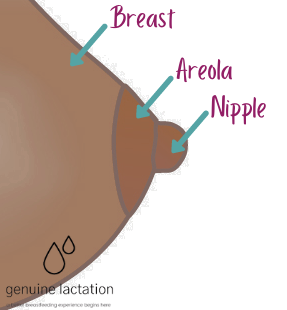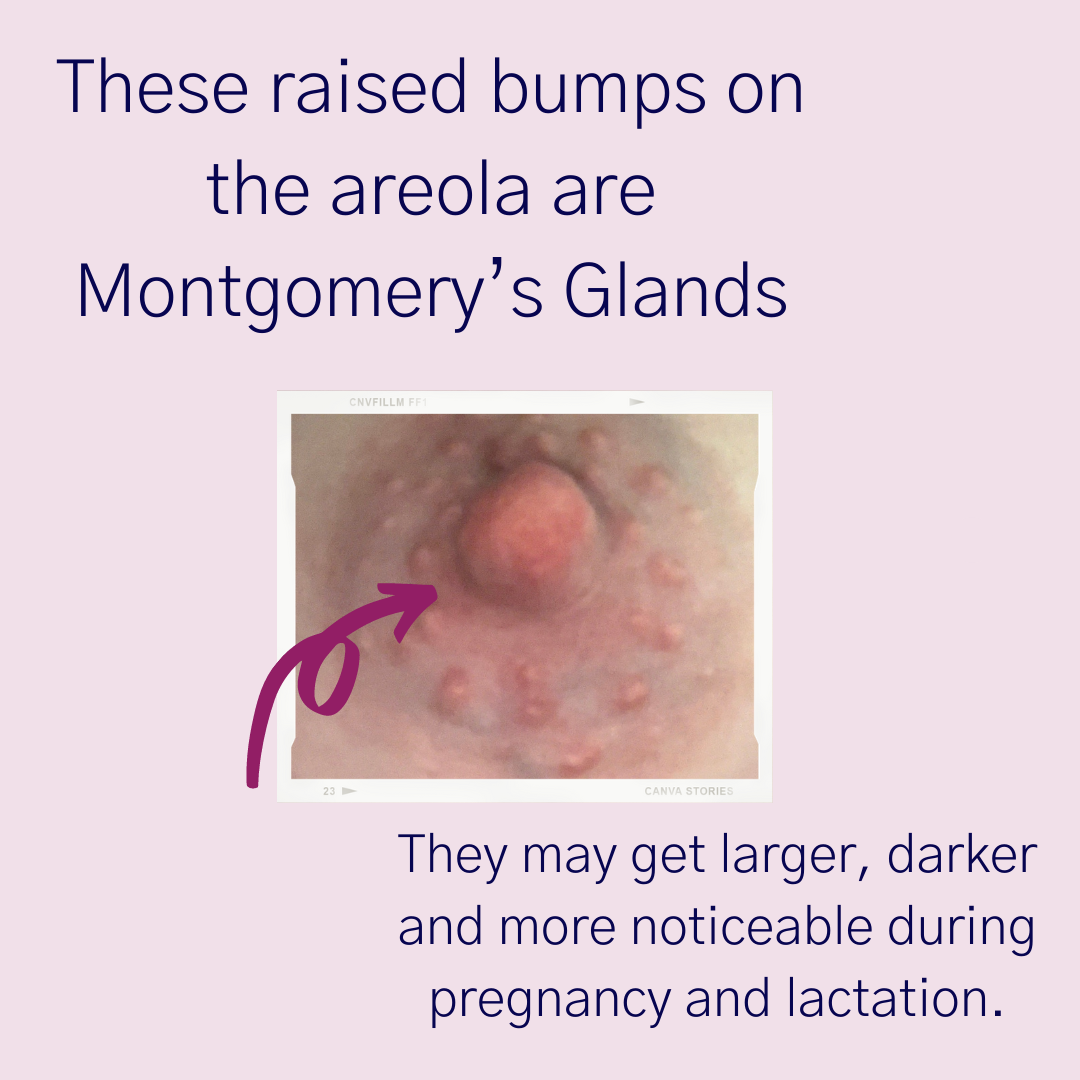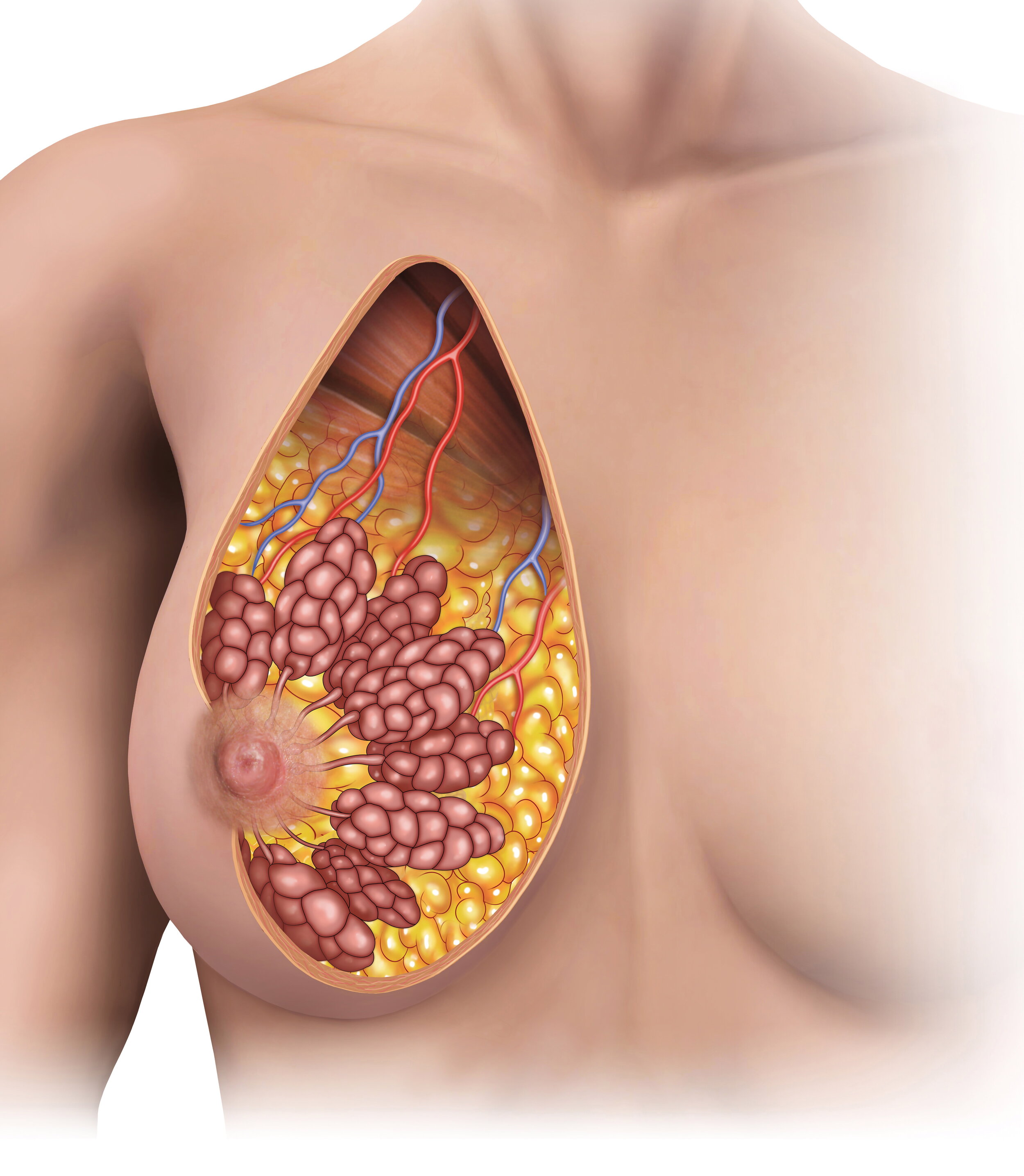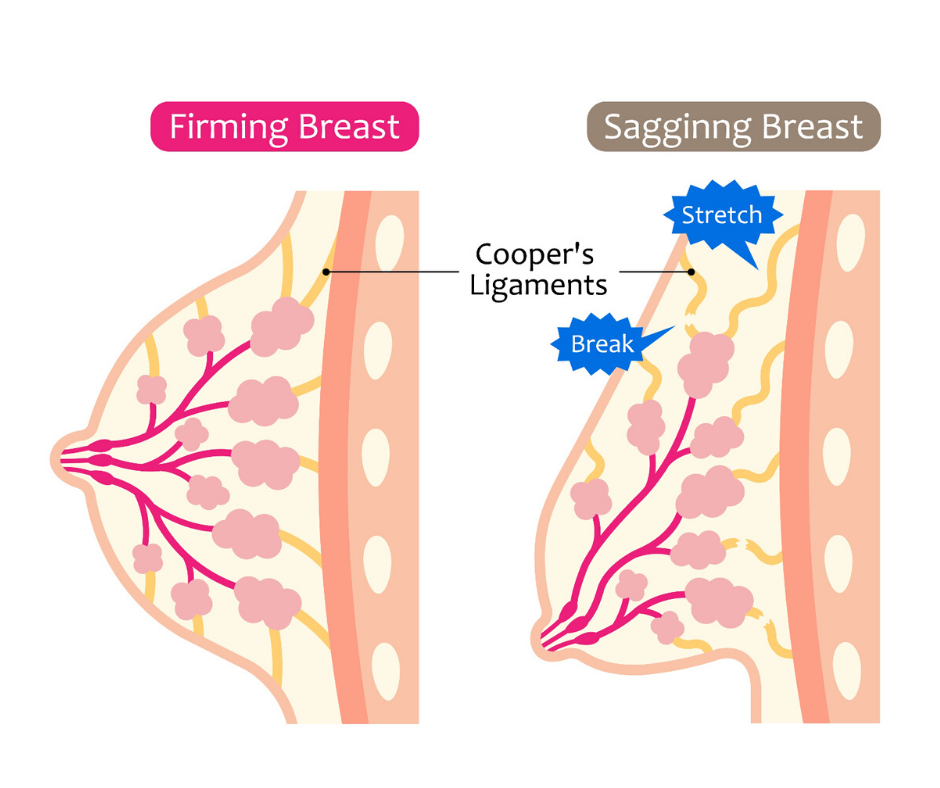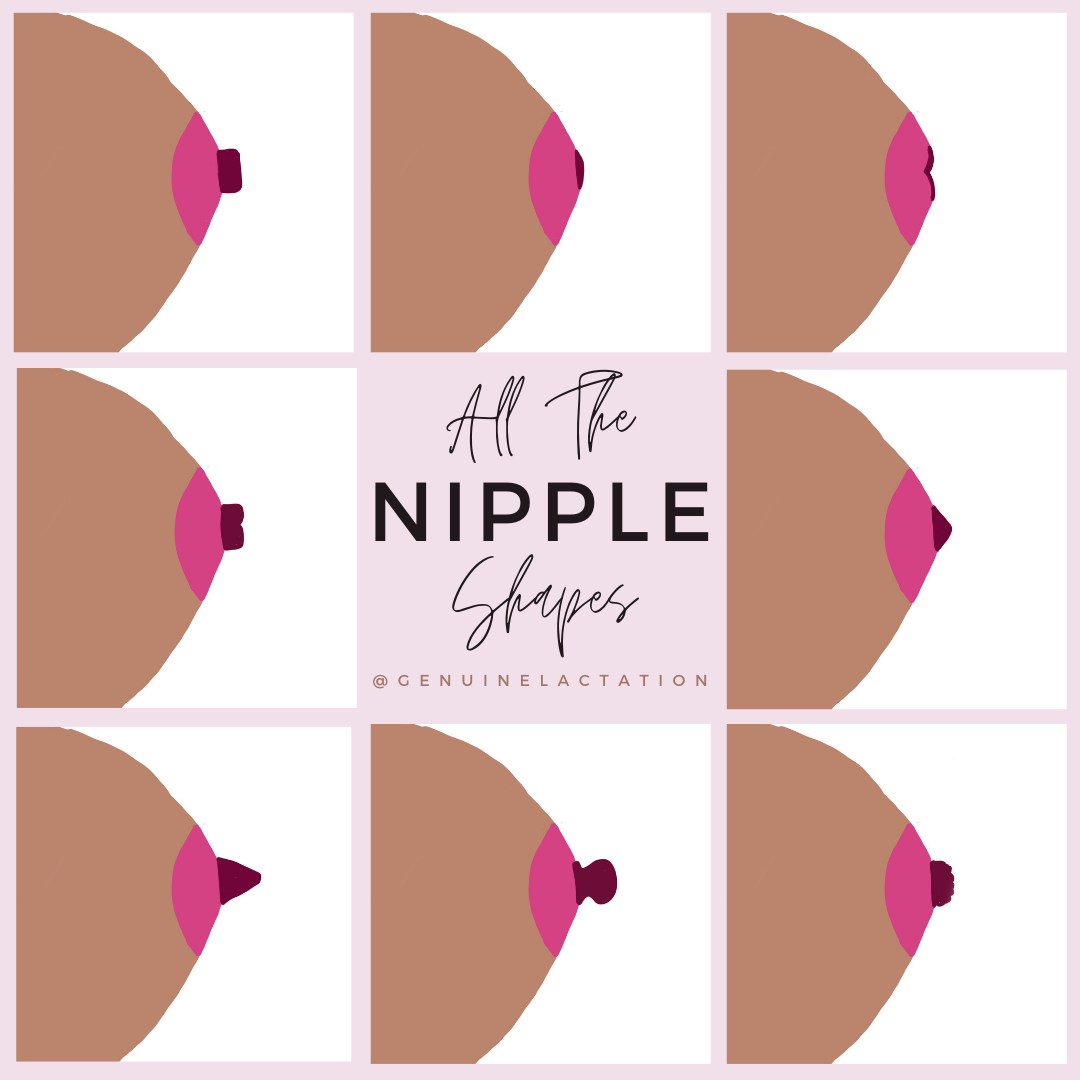Do You Know Your Breast Anatomy?
Very few people spend any real time wondering about the intricate details of their Breast Anatomy, and it isn’t a topic that is widely taught at all! So it’s no wonder that so many people are somewhat lost when it comes to their breast anatomy, and the many questions they may be asked about their’s when breastfeeding. The worst part is when people are too embarrassed to say they don’t know, or apologize for not knowing, like somehow that was something they were supposed to have studied up on.
Here is your crash course in breast anatomy so that you never have to feel like that again!
On the exterior of the breast there are three basic parts you should be aware of.
The Breast is the fatty, mounded, protruding part of the breast.
The Areola is a pigmented circular area that circles the base of the nipple.
The Nipple is the tip of the breast.
Breasts, Areolae, and Nipples come in all sizes, shapes, colors, and combinations!
These three parts together are what are typically referred to as your breasts.
On your areola, you may notice raised bumps that enlarge, darken, or become more noticeable during pregnancy and lactation.
Inside the breast there is fatty tissue and mammary gland tissue. Fatty tissue is exactly what it sounds like. Breasts are comprised of mounds of fat. The mammary tissue is the actual milk making tissue in your breasts!
Mammary tissue, or glandular tissue is pictured here in the pink grape like clusters surrounded in the breast by the fatty tissue.
See those red and blue veins running into the breast? That is the blood supply for the breast, and is where the nutrients and building blocks of milk are pulled from the maternal blood supply.
The amount of mammary tissue determines the overall milk-making potential of each individual breast, but is not at all related to the size of the breast overall. Large breasts can have small amounts of milk making tissue, and small breasts can have large amount of milk making tissue.
Breasts are shaped by Cooper’s Ligaments, and the stretching and snapping of these ligaments during pregnancy, breastfeeding, and weight gain all contribute to the breasts sagging over time. Gravity also plays a large role in this, and there are people who theorize bras provide support to the breast but result in weaker ligaments over time.
A common concern about breastfeeding is that the act of breastfeeding will result in sagging breasts, and therefore, parents may consider not breastfeeding to maintain the aesthetics of the breast. This is a myth, and unfortunately it is the actual pregnancy that causes most of the sagging. Try not to stress about this though as your breasts were not meant to remain perky for all of eternity. Click here to read more about saggy breasts.
Now let’s talk more about nipples, as this is the most common area of concern for breastfeeding parents!
The nipples we see in the media are almost always erect nipples and look like gumdrops sitting on top of perky rounded breasts. This would leave you to believe nipples only come in one basic shape.
In reality, nipples come in all shapes and sizes! We mainly categorize nipples by how they protrude from the areola.
Normal nipples stick out from the areola on average between 10-15 mm from the areola. Flat nipples barely protrude, or are smooth with the areola. Inverted nipples actually turn in on themselves and are hidden from view within the breast. Inverted and flat nipples may evert with stimulation, or they may not. If you have flat or inverted nipples, it can contribute to breastfeeding difficulties. A lactation consultant may need to assist you with this.
I work with a lot of pumping moms, and what I can tell you is that nipples come in a variety of shapes and sizes. Nipples may be erect, short, long, cone shaped, tubular, bulbous, flat, inverted, or dimpled. All of these shapes have implications for pumping comfortably, but they are all variations of normal.
So how big are nipples supposed to be? Again, this is an area of great variance, and in my clinical practice, the diameters of nipples range from 9 mm to 32 mm. Some may be bigger or smaller than this, too!
So where does the milk actually exit the nipple? On the face of the nipple, between 10-20 nipple pores allow the milk to exit. During a let-down reflex, the milk may actually spray from these holes in various directions!
This statue of a lactating mermaid shows the knowledge of breastfeeding that must have once been fairly commonplace before formula feeding culture was dominant.
So now you have some basic working knowledge of breast anatomy to help you have the conversations you may need to have with your lactation consultant or health care provider more comfortably.
If you are ever concerned about your breast anatomy, or want to know if something is normal or not, you can always reach out, and I am happy to help you assess what you might be seeing, no knowledge of anatomical terms required!

